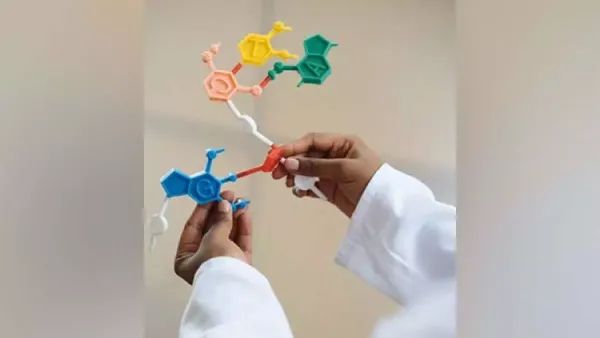
Washington Washington: Scientists at Stutgart University have succeeded in controlling the composition and function of organic membranes with the help of 'DNA Origami'. It will help in facilitating the transportation of large therapeutic loads in cells. It now creates a new way for the targeted administration of drug and other medical inventions. The team of scientists used DNA Origemie structures as reinstroving nanorobot which can reversed their shape and thus in the micrometer range Can affect your immediate environment.
Researchers found that the change of these DNA nanorobotes may be combined with the distortion of the huge unilameal vesicles (GUVs) and the formation of synthetic channels in the model GUV membrane. These channels allow large molecules to pass through the membrane and they can be sealing again if necessary. It is a very valuable tool that can be added to the toolbox of synthetic biology.
Pro. Laura Na Liu and his team published their conclusions in Nature Materials magazine. Cell shape and morphology play an important role in its biological work. It matches the principle of “form work”, which is common in modern areas of design and architecture. However, transferring this theory in artificial cells is a challenge in synthetic biology. Progress in DNA nanotechnology now now provides promising solutions. They allow the creation of new transport channels that are large enough to facilitate the path of therapeutic protein across the cell membrane.
In this emerging field, Fellow Prof. at Stutgart University Director of Second Physics Institute and Max Planck Institute for Solid State Research (MPI-FKF). Scientists such as Laura Na Liu have developed an innovative tool to control the size and permeability of lipid membrane in synthetic cells.
These membranes are made of lipid bills that surround an aquatic compartment and serve as a simplified model of biological membranes. They are useful for studying membrane dynamics, protein interactions and lipid behavior. “This work is a milestone in the application of DNA nanotechnology to regulate cell behavior,” says Liu.
The team works with giant unilameller vasicals (GUVs), which are simple, cell -shaped structures that mimic living cells. Using DNA nanorobot, researchers were able to affect the size and functionality of these synthetic cells. DNA Nanotechnology is one of the main research areas of Laura Na Liu. He is an expert in DNA Origemi structures – DNA strands that are bent through specially designed small DNA sequences, so -called staples.